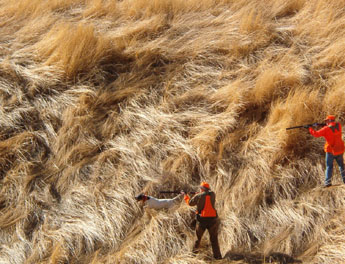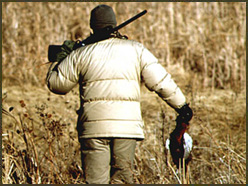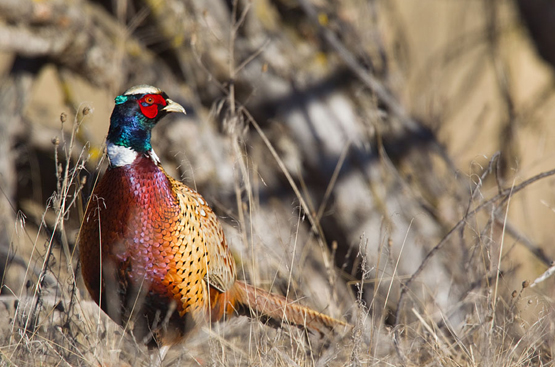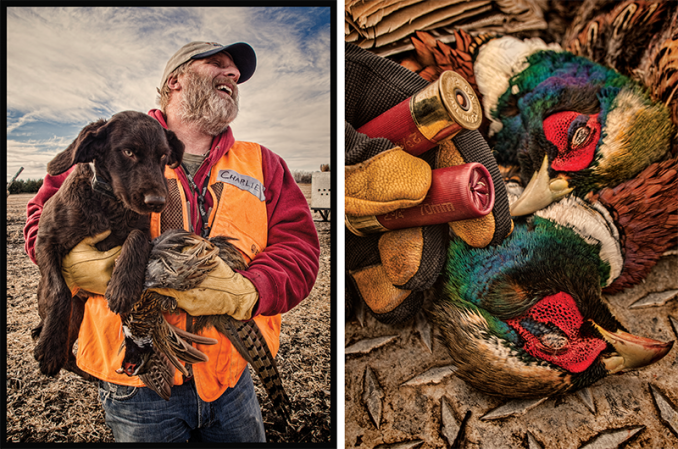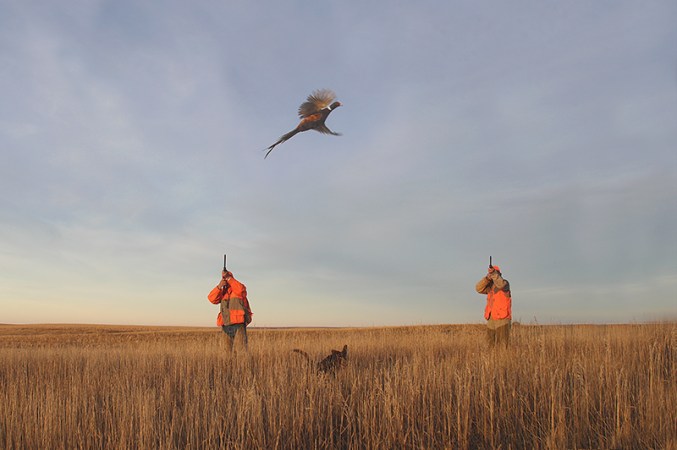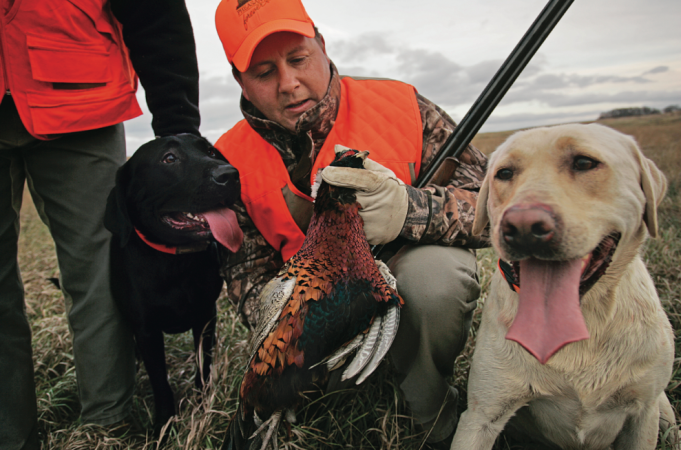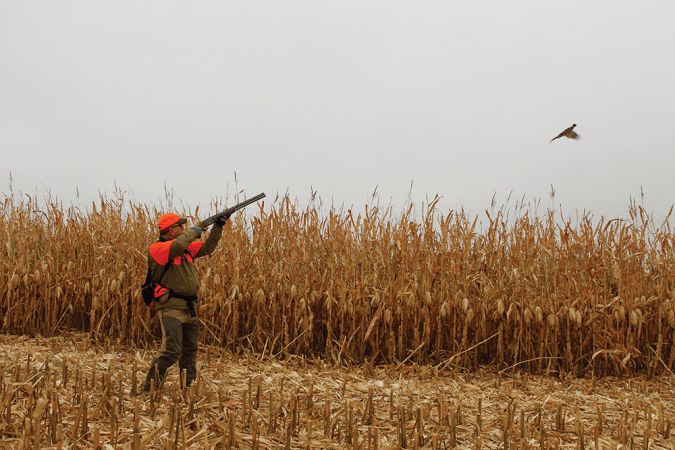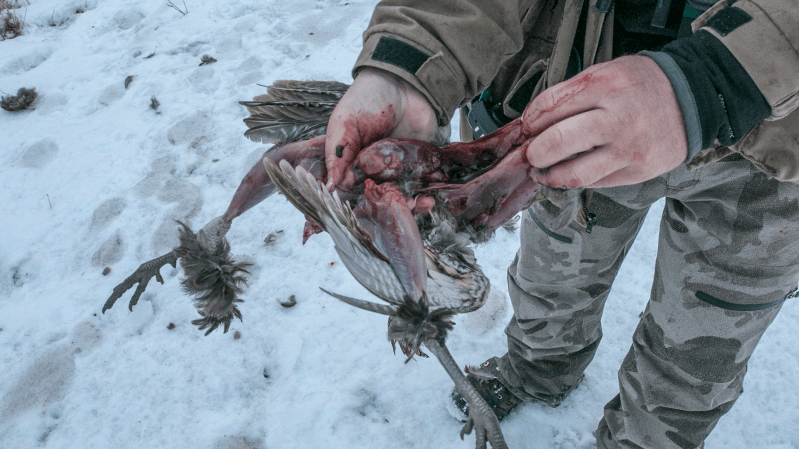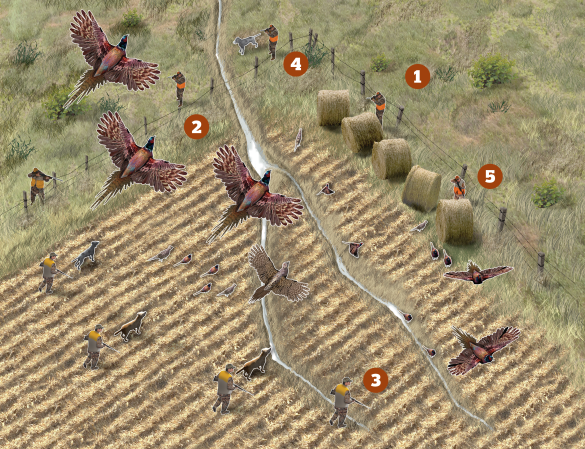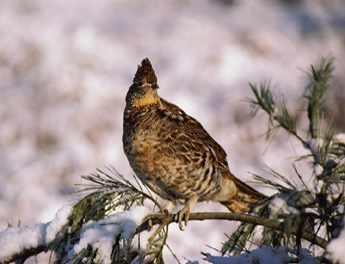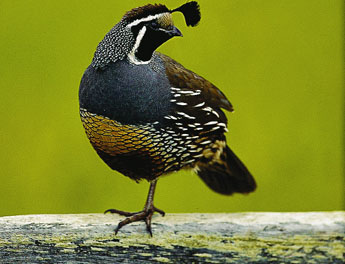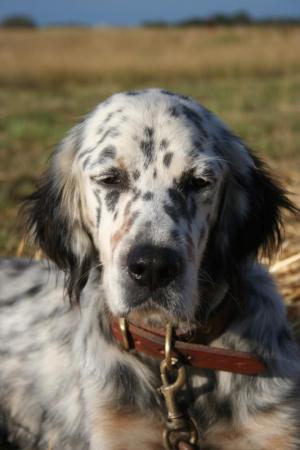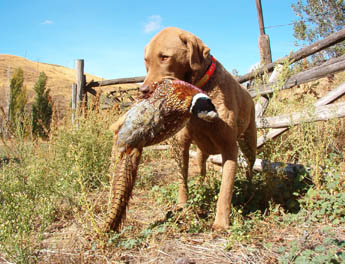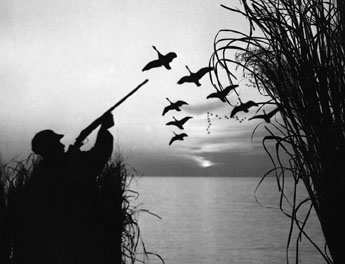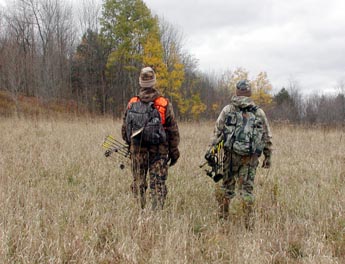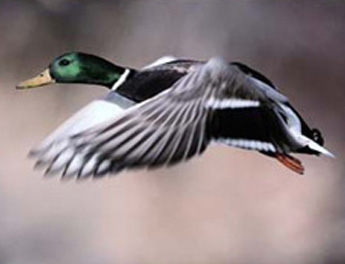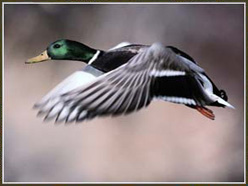The prickly-pear thorns were beginning to take their toll on my buddy’s Labrador retriever. She was beginning to limp noticeably, but it hadn’t slowed her down much, and the Lab’s enthusiasm suggested that it didn’t bother her if we were hunting ringnecks in the wrong place. Instead of the more typical cornfields and cattails, the land about was dotted with cactus and yucca plants. To get away from the crowds, we wanted to hunt apart from the mainstream habitat. We succeeded. We were so far from other hunters that we hadn’t heard another shot all afternoon.
“She’s definitely on the trail of a bird,” my friend said as he watched the dog, her wagging tail in overdrive. “That plum thicket ahead looks like the best hideout. Get ready.”
With fresh scent driving her, the Lab charged in for the flush. You couldn’t have scripted a better ending to our hunt. Two tie-dye-colored roosters burst from the dark interior and catapulted past my buddy, who caught them both in a rapid-fire pattern of No. 5s. Sunset ended our fun, and although we were one bird shy of our limit, it had been a perfect afternoon.
That hunt took place more than an hour from some of the best and most famous pheasant-hunting territory in North America. Leased land, high-priced hunts and crowds of other wing-shooters had steered us away from easier pickings to hunt habitat off the beaten path.
Limits and nonstop action might not be guaranteed in such places, but you can find quality hunting by sidestepping the high-density areas where other hunters throng.
Good Alternatives
For more than a dozen years, while I worked for the South Dakota Department of Tourism, I spent winter weekends at sports shows fielding questions on a variety of topics. Right behind “When are they going to finish that monument to Crazy Horse in the Black Hills?” the most common question was “Where’s the best place in South Dakota to get a limit of pheasants?” Most of those who asked were working-class folks like me. One guided hunt a year was a luxury; anything else had to be an on-your-own outing.
Instead of pointing the hunters in the direction of the Department of Game, Fish and Park’s “pheasant county of the year,” I steered them to areas that didn’t make the list of top spots for ringnecks. The places I circled on the map typically had good quantities of public land, limited leased land and scattered densities of pheasants. I knew that by using a bit of shoe leather, they’d have a good hunt without having to take out a second mortgage or raid junior’s college fund.
[pagebreak] Second-Rate Housing
Even though you want to steer clear of the top pheasant-producing counties in a state, take the time to find out where the hot spots are located. Why? Like a bull’s-eye, each consecutive circle away from the center puts you one step closer to an overlooked, unpressured honey hole.
Moving away from the center of a high-density area doesn’t automatically put you into birds. Pheasants still require certain necessities to thrive, and even though mediocre areas lack the best habitat, a few basic resources go a long way in producing pheasants. For pheasants to sustain a population they must have access to food, water, habitat and, particularly, winter habitat.
Pheasant populations have exploded in the nation’s midsection due to the federal government’s Conservation Reserve Program (CRP). In places such as Iowa and central South Dakota, where grassland habitat is interspersed with grain fields, pheasants do particularly well, especially when ideal winter habitat is nearby. When those CRP fields are situated farther away from grain country-often in the western reaches of the pheasant belt-they are not as productive but still attract birds. CRP grasslands provide both critical nesting and security habitat.
“You need to look for habitat, and CRP is the best,” says Tome Berger, a 30-year veteran pheasant hunter. Berger, a Kansas native who works for the Kansas Department of Wildlife as an environmental specialist, first looks for suitable habitat in low-density areas. “I’ll often drive around a two- or three-county area just to locate CRP fields. I always note those that are surrounded by grain fields. Later in the season, grain fields close to CRP are the focus of my hunts. Any pheasant in the country will be close to a food source and heavy cover. That’s what I try to find.”
When WinterHowls
CRP provides a good home, except when winter winds howl. Then, pheasants require timber and brush. Many second-best pheasant locales depend on shelterbelts, river and creek bottoms to provide this habitat. Ideal winter range includes dense stands of conifers and shrubs. Groves around farms with two to three rows of shrubs provide small pockets of ringnecks with vital cover. Thick pockets of other vegetation can also shelter birds. Cattail wetlands, plum thickets and steep ravines lined with shrubs provide suitable habitat in snow season.
“Some of the best hunting in low-density areas occurs when the weather turns nasty,” explains Berger. “Not only does a foot-and-a-half of snow weed out the average hunter, but it tends to bunch the pheasants in good habitat. I always look for ringnecks after a snowstorm in thick, weedy shelterbelts, especially those around farmyards.”
Berger also recommends that a hunter revisit some of the early-season hunting locations that might not have yielded good results then. Heavy snow and nasty weather have a way of moving dozens of birds into good habitat that didn’t appeal to them in the fall. Those same birds might have been scattered across two sections of land in the early season. Pheasants are gregarious and will congregate in small tracts of winter cover. If food is found next to the cover, the birds will fare even better.
[pagebreak] Unlike a herd of cattle, small pockets of pheasants require little in food quantity. Pheasants are granivores, or seed-eaters. Corn meets that need in much of the pheasant belt, but soybeans, sunflowers, wheat, milo, oats and a medley of weed seeds fill out a ringneck’s menu. Greens also make the year-round list and include alfalfa, clover, grasses and dandelions.
In marginal farm ground, which frequently is where you’ll find good pheasant hunting, drought-tolerant crops such as wheat and sunflowers make up the bulk of the grain acreage. You’ll also discover that in such “second-best” locales, cattle grazing increases as corn production decreases. Although habitat is the key consideration, remoteness can guarantee decreased hunting pressure. Unimproved roads, habitat a mile from any trail and habitat hidden from sight might result in less hunting pressure. Keying in on good areas with limited access can result in great hunting.
Pinpointing a Hotspot
If you live in a pheasant-rich state, a weekend drive will help you find a hunting location away from the mania of high-density hot spots. If you live outside the region, the phone and Internet will be your best links to pheasants until the season opens. Since pheasant numbers depend on habitat, it pays to contact the habitat specialists in pheasant country.
Before ringing the phone of a state’s pheasant biologist, search the Internet for up-to-date information regarding pheasant surveys and counts, harvest statistics and hunting license sales. These indicators will provide you with an educated guess on the pheasant density and detail hunting pressure in a state. Next, contact either the state’s upland biologist or a conservation officer in the region you plan to hunt. These folks can give you details on specific populations and likely hunting pressure in that area.
To locate CRP habitat in a county or region, contact a county Natural Resources Conservation Service office. These offices assist with the management of federal agriculture and habitat programs such as CRP. Staff members will be able to tell you how many acres of CRP are in the area and, through personal experience, perhaps make observations about likely pheasant numbers you might encounter.
Develop local, on-site contacts. Berger suggests that you glean information from relatives, friends or classmates who live in marginal pheasant country. Then, too, coffee-shop and convenience-store conversations often center on pheasants.
Sure, it’s great fun for a hunter to be in a ringneck Disneyland amid hundreds of flushing birds. But as is the case with the famous theme park, it’s becoming a pay-to-play environment in the heart of the best pheasant country. Sidestep the traditional hot spots and you’ll find that the pheasant hunting is just as satisfying off the beaten path. e office. These offices assist with the management of federal agriculture and habitat programs such as CRP. Staff members will be able to tell you how many acres of CRP are in the area and, through personal experience, perhaps make observations about likely pheasant numbers you might encounter.
Develop local, on-site contacts. Berger suggests that you glean information from relatives, friends or classmates who live in marginal pheasant country. Then, too, coffee-shop and convenience-store conversations often center on pheasants.
Sure, it’s great fun for a hunter to be in a ringneck Disneyland amid hundreds of flushing birds. But as is the case with the famous theme park, it’s becoming a pay-to-play environment in the heart of the best pheasant country. Sidestep the traditional hot spots and you’ll find that the pheasant hunting is just as satisfying off the beaten path.
